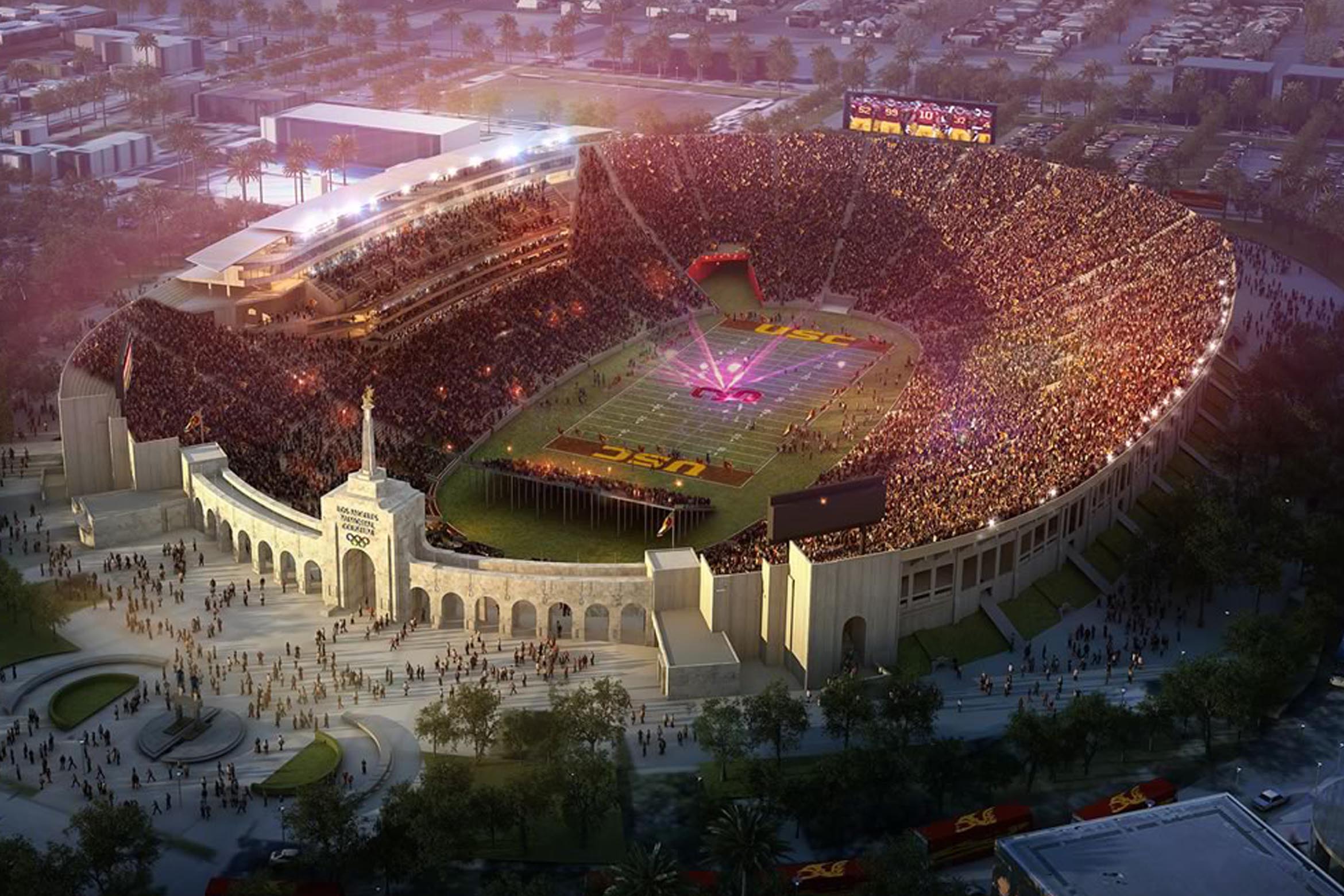THE LOS ANGELES COLISEUM: DEDICATED TO THE UNITED STATES ARMED FORCES MEMORIAL
January 28, 2016

The Coliseum has a unique connection to the veterans of the United States Armed Forces for being dedicated and rededicated at various times over the years to recognize the brave men and women that served our country. Upon completion in 1923, the Los Angeles Memorial Coliseum was originally dedicated as a Los Angeles County memorial to World War I veterans. After World War II, the Coliseum was rededicated to both wars by Governor Earl Warren on Memorial Day 1946. Not everyone was happy with combining the two wars in one memorial so plans were developed to have a separate WWII Memorial in Exposition Park.
In 1953 approval was granted for a memorial patterned on the famous photograph of the flag raising at Mount Surabachi on Iwo Jima, and its location was to be the Figueroa Street entrance to Exposition Park. For reasons lost to history (perhaps the fact that the United States Marines were about to construct a monument with the same imagery in Washington, DC), the Park memorial never materialized. However, when the Sports Arena was built in Exposition Park and opened in 1959, it became the City memorial to WWII and the Korean War. In 1966, it was rededicated to include the Vietnam Conflict. The Coliseum was once again referred to as the County WWI memorial.
In 1968, top Great War Air Ace Eddie Rickenbacker headlined a Veterans Day ceremony at the Sports Arena. Though no text exists of his remarks, this ceremony was apparently when the Coliseum was rededicated, but not just to LA County’s war veterans, but to “…all those who served in World War I.” This national designation is significant as it is one of only a handful of large scale memorials in the United States that seeks to encompass the entire Great War generation. A year later General Omar Bradley was the featured speaker to give recognition to the 50th anniversary of the war’s end as the current plaque placed on the Memorial Coliseum was unveiled.
The Los Angeles Memorial Coliseum seeks to remember its heritage, not only as a stadium of considerable athletic and human achievement but, as a venue that pays tribute to those who answered the nation’s call nearly one hundred years ago. May the Torch of Freedom always burn bright.
To learn about the U.S. World War One Centennial Commission, its education programs, and its commemorative events, click HERE.